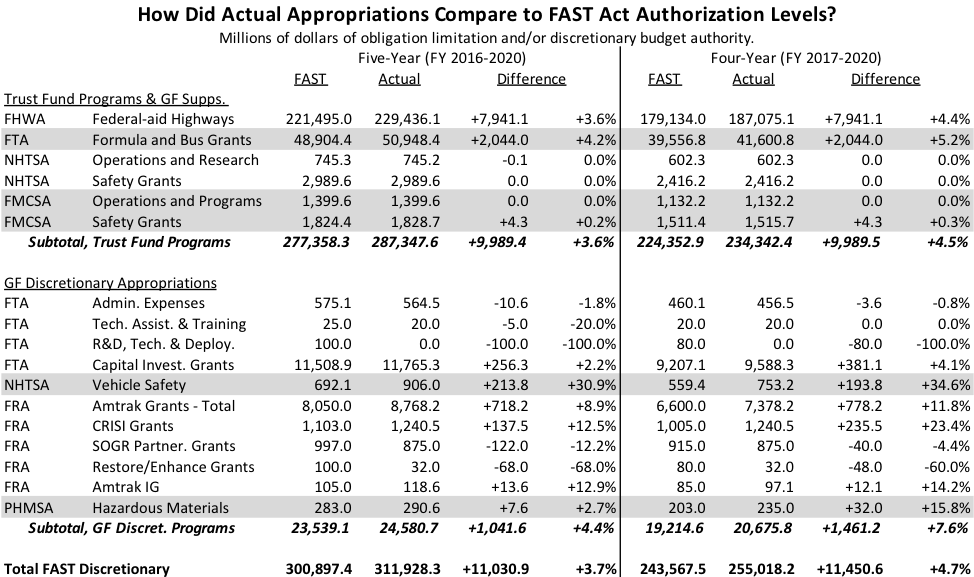Now that the final fiscal year 2020 Transportation-Housing Appropriations bill has been released, we can add up how well the House and Senate Appropriations Committees met the funding authorization targets set for surface transportation programs by the FAST Act of 2015.
The answer is: very well indeed – but the five-year total may be the wrong figure to use.
The FAST Act was signed into law on December 4, 2015 and covered five fiscal years (FY 2016-2020). But while the appropriations bill funding FY 2016 was signed into law thirteen days later, all of of the discretionary spending numbers in the bill were pretty much nailed down before the FAST Act was finalized. So programs that required general fund appropriations and were created by the FAST Act had zero funding in the House or Senate versions of the bill that had been passed before FAST, and thus were generally not included (particularly for the rail grant programs created by FAST).
And then, the bipartisan budget agreements in effect for fiscal years 2018, 2019 and 2020 ended years of slow growth for discretionary appropriations and allowed the appropriators to not only fund authorized discretionary programs at much higher levels but also to add money to existing trust fund contract authority programs.
As a result, the the appropriators wound up meeting the FAST Act obligation limitation levels out of the Highway Trust Fund for the five years of the FAST Act ($287.3 billion) and then adding another $10 billion on top of that over FY 2018-2020 ($7.94 billion for highways and $2.04 billion for mass transit) on top of that, meaning that total funding for those programs was 3.4 percent over the five-year FAST authorized levels.
For programs that were authorized to be appropriated entirely from general revenues, the FAST Act authorized $23.5 billion over five years and the appropriators provided $24.6 billion, 4.4 percent more than authorized. But since the extra money did not arrive for 2016, over the four-year FY 2017-2020 period, total appropriations were almost $1.5 billion (7.6 percent) higher than authorized by FAST.
All told, total discretionary funding action by the Appropriations Committees for programs authorized by the FAST Act exceeded the target authorization levels by $11 billion (3.7 percent) over five years.





